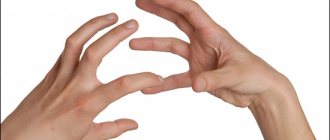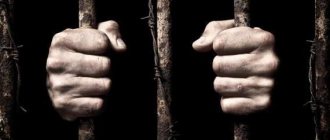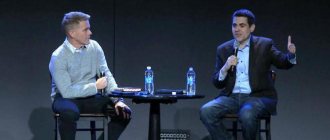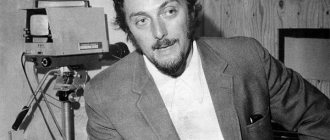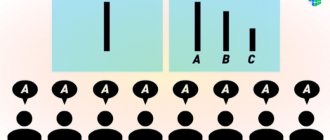An experiment is any complex process in which measurements are used and tests are conducted to test and study the process. At this moment, all kinds of studies are carried out to check the performance of the object under study. Theories and hypotheses are born from experiments carried out around the room.
Experiments are vital in the scientific field and are an integral part of the research carried out in the laboratory.
An experiment is a process by which one or more independent variables, defined as causes, are deliberately manipulated to subsequently analyze the consequences they have on other variables, defined as effects.
An experiment is defined as a type of scientific experiment in which some changes are deliberately induced and the results are observed or interpreted for educational purposes.
According to Sampier, the experimental method is the deliberate manipulation of an action that is used to analyze its possible consequences. That is, it is a study in which one or more independent variables (proposed cause) are intentionally manipulated to analyze an effect. The effect of this manipulation on one or more dependent variables is the intended effect in the control situation for the researcher.
General information
Robert Woodworth, who published his classic textbook on experimental psychology (Experimental psychology), defined an experiment as a structured study in which the researcher directly changes some factor (or factors), holds the others constant, and observes the results of systematic changes. He considered the control of the experimental factor
, or in Woodworth's terminology, the "independent variable", and tracking its effect on
the observed consequence
, or "dependent variable". The experimenter's goal is to keep all conditions constant except one—the independent variable.
In a simplified example, the independent variable can be considered as a relevant stimulus
(
St(r)
), the strength of which is varied by the experimenter, while the dependent variable is the reaction (
R
) of the subject, his psyche (
P
) to the influence of this relevant stimulus.
However, as a rule, the desired stability of all conditions, except for the independent variable, is unattainable in a psychological experiment, since almost always, in addition to these two variables, there are also additional variables, systematic irrelevant stimuli
(
St(1)
) and random stimuli (
St(2)
), leading to systematic and random errors, respectively. Thus the final schematic representation of the experimental process looks like this:
Therefore, in an experiment, three types of variables can be distinguished:
- Independent variable
- Dependent Variable
- Additional variables (or external variables)
So, the experimenter is trying to establish a functional relationship between the dependent and independent variables, which is expressed in the function R
=f(
St(r)
), while trying to take into account the systematic error that arose as a result of the influence of irrelevant stimuli (examples of systematic error include the phases of the Moon, time of day, etc.). To reduce the likelihood of the impact of random errors on the result, the researcher seeks to conduct a series of experiments (an example of a random error could be, for example, fatigue or a speck of dust getting into the subject’s eye).
The main objective of the experimental study
The general goal of psychological experiments is to establish the existence of a connection R
=f(
S, P
) and, if possible, the type of function f (there are various types of relationships - cause-and-effect, functional, correlation, etc.).
In this case, R
is the subject’s reaction,
S
is the situation, and
P
is the subject’s personality, psyche, or “internal processes.” That is, roughly speaking, since mental processes cannot be “seen,” in a psychological experiment, based on the reaction of the subjects to stimulation regulated by the experimenter, some conclusion is made about the psyche, mental processes or personality of the subject.
Stages of the experiment
In each experiment, the following stages can be distinguished. The first stage is setting the problem and goal, as well as constructing an experimental plan. The experimental plan should be built taking into account accumulated knowledge and reflect the relevance of the problem.
Validity in a psychological experiment
Main article: Validity (psychology)
As in natural science experiments, so in psychological experiments, the cornerstone is the concept of validity: if the experiment is valid, scientists can have some confidence that they measured exactly what they intended to measure. Many measures are taken to ensure all types of validity are met. However, it is impossible to be absolutely sure that in any, even the most well-thought-out study, all validity criteria can be completely met. A completely flawless experiment is unattainable.
Positive and negative results of experiments
Everyone likes to get positive results from experiments, but they are actually in the minority, especially when it comes to science. Positive results confirm the original hypothesis. Negative or “secondary” results refute it.
These negative results lead to the next stage of the study. Making the results public has a positive impact on the scientific community. The goal is to make these experiments available to the rest of the community, avoiding wasting time and money for the rest of the scientific community and promoting much faster scientific progress.
Laboratory experiment
It is also called artificial, that is, the conditions for its implementation are created by experimenters in a laboratory setting, and not in a real one. The subject knows that he is the object of the experiment, but the intention and expected result usually remain secret.
Its signs:
- confined space conditions;
- results based on participants' reactions.
The advantages of this method:
it is possible to dose and control independent variables that are responsible for stimulating the object, as well as additional variables that do not have an important influence; a high degree of reliability and reliability, determined by the ability to provide the necessary parameters in the laboratory and compliance with instructions.
But artificiality is also the most significant disadvantage, because such experience is divorced from life and may not at all correspond to the real situation. What is done in the laboratory is not always capable of sprouting on real soil and remains forever only an interesting discovery, in no way applicable in practice, and therefore meaningless.
There are quite a lot of disadvantages:
- Essential conditions may not be taken into account. For example, in the laboratory they study a person's reaction time to some stimulus or sensory sensitivity, without paying attention to factors such as the significance of the signal or semantic connections, which actually play a significant role in memory. Everyone knows that it is difficult to memorize nonsense, but sonorous and touching poetry is much easier. Therefore, the results of laboratory experiments may be controversial.
- Analyticity. Individual objects and phenomena are considered separately, analysis prevails over synthesis, and interactions are not taken into account.
- Abstractness. Experience does not take into account real conditions, their specificity, or practical human activity. The patterns identified in the experiment are of a general nature; if they are transferred mechanically to life, the effect may be completely different from what was obtained in the laboratory.
Despite its shortcomings, in science this method is considered the highest form of empirical knowledge. It gives the best and most accurate results when carried out and monitored correctly.
Possibilities and limitations of experiment as a method
The following possibilities of experiment as a research method are highlighted:
- selecting the start time of the event;
- repetition of the event being studied;
- conscious manipulation of variables to change results.
At the same time, there are limitations that accompany the experiment:
- subject-subject relationship that violates scientific rules;
- the psyche is characterized by spontaneity, impermanence and uniqueness;
- the psyche is a complex object for research;
- ethical restrictions - studying some problems experimentally may be regarded as immoral or pose a risk to the subjects;
- All participants in the experiment should be informed in advance about aspects of the study that may affect their willingness to participate.
Stages of experimental activity
- Formulation of a cognitive task, a goal associated with the experimental method.
- Selection of equipment and design of experimental setup.
- A statement of the physical principle on which the experimental method will be applied.
- Observation of a phenomenon, process.
- Measurement (reading the necessary measurements on the equipment, obtaining some experimental data).
- Description, interpretation of experimental data and their analysis.
- Formulation of conclusions, conclusion, practical significance of the results obtained.
Examples of experiments
Let's consider the description of several psychological examples, because
The field of psychology and sociology often attracts public attention. Despite the fact that many of them look very dubious from an ethical point of view, they help people determine which methods of behavior towards others are evil and should be removed from our lives in the future, and which ones help the development and fuller self-realization of the individual in life. society
Hawthorne effect
This name was given to a series of socio-psychological experiments conducted by a group of scientists in the USA in the 20-30s of the 20th century at the Western Electrics factory. It was necessary to determine the reason for the decline in worker productivity. It turned out that the development depends on the fact that the subjects grew in their own eyes due to the increased attention to them from the researchers and felt themselves in a higher social status. It has been said that productivity is influenced by the perception of the prestige of one's work and social connections in the group. However, these results were later considered controversial and obtained by chance. The workers simply considered the psychologists to be spies of the company management and were afraid of getting laid off.
Milgram experiment
Described by a Yale University psychologist in 1963. It showed how great the degree of subordination and obedience to “authority” is among people, despite conflict with personal beliefs and moral suffering. The subject was ordered to inflict physical pain with an electric shock on another person who was innocent of anything (his role was played by an actor, but the second participant in the experiment did not know about this). It turned out that if her job duties include inflicting pain, then even the moral torment of such “work” is not a hindrance to her. The need to obey those who are higher in status is very deeply rooted in people's minds.
It is interesting that initially these experiments were carried out in order to understand what motivated the Germans who served in Nazi concentration camps. The author intended to go to Germany, since according to tradition it is believed that the Germans are more disciplined and prone to submission, but Stanley Milgram soon found out that the Americans in this regard are no different from the representatives of the German people. The fear of disobeying the boss turned out to be expressed equally in everyone.
Ringelmann effect
It was described by a French professor of agricultural engineering in 1913. Ringelman found that the larger the group, the lower the individual productivity of each of those participating in it. This is due to the fact that in a group personal responsibility is reduced, because failure can be transferred to the group as a whole, and not to an individual employee who performs poorly. When a person works alone, he gives his best, because only he will have to answer for what he has done.
Monstrous experiment
The name speaks for itself. His idea came to the mind of American scientists from the University of Iowa in 1939. They wanted to know whether it was possible to induce stuttering in absolutely healthy children. 22 children were selected from an orphanage and divided into two groups. In the first group, children were praised for good reading and correct speech, while in the second they were scolded and ridiculed in every possible way. As a result, participants in the second group developed pronunciation defects and shyness. For some, the problems persisted until the end of their lives. The results of the experiments were hidden from the public so as not to spoil the reputation of the experimenters and not to compare their activities with Nazi experiments on people during the war.
Classification of experiments
There are quite a lot of methods and types of experiments, because their functions and implementation are very different. If we summarize all the views, the classification picture will look like this:
- In reality and completeness - real (concrete) and mental, otherwise abstract or imaginary. The latter is ideal when there are no external influences on the dependent variable except one independent variable; this is not possible in life; infinite, covering all possible situations for the entire population under study; impeccable, combining the features of the previous two.
- Purpose - research, examination or diagnostic, demonstration.
- By type of impact on the object - internal and external.
- According to the level of study - preliminary, main, control.
- According to the degree of intervention of the researcher in the life of the subject, i.e. conditions for conducting the experiment - laboratory (artificial), natural (field), formative, as well as duplicating reality and improving.
- According to the number of independent variables - bivariate and multivariate.
- Whenever possible, change the independent variable—provoked and natural.
- According to the number of objects taking part - group and individual.
- According to the method of identifying connections between variables - intraprocedural (internal connections), interprocedural (external connections), cross-procedural (connections intersect).
- By type of change in the independent variable - quantitative and qualitative.
Experiment in scientific work
An experiment should be understood as a specific way of understanding a topic or its individual aspects, which is accompanied by specific actions of the researcher. In one case, the author of a scientific research can observe the object from the outside, in the other - create special conditions, carry out specific activities to assess the problem and situation. Moreover, the implementation of “experience” is of a practical nature.
What is the experiment in research work?
The role of experiment in scientific research work is great. Firstly, the presence of an experimental part in a scientific work demonstrates that the author has specific skills: assessing the situation, competent selection of tools and methods, comprehensive study of the object, planning and organizing events, taking into account requirements, attentiveness of the researcher, etc.
Secondly, the experiment is designed to evaluate the effect of the problem in reality: how it manifests itself, on what scale, under what conditions, how it is reflected, etc.
Thirdly, the organization and conduct of experiments allows us to emphasize the novelty of the topic under study: the changes that have occurred within its framework over a certain time, the significance of the research, the capabilities of the author (his approach, abilities, creativity, etc.).
The implementation of the experimental part allows you to expand the boundaries of research, turn theory into practice, evaluate the level of action of rules and patterns in life, and also demonstrates the organizer’s ability to use the acquired knowledge.
Experiment “Me and Others”
“Me and Others” is a 1971 Soviet popular science film that features filming of several psychological experiments, the progress of which is commented on by a narrator. The experiments in the film reflect the influence of the opinions of others on a person and his ability to think out what he was unable to remember. All experiments were prepared and conducted by psychologist Valeria Mukhina.
Experiments shown in the film:
“Assault”: subjects must describe the details of an impromptu attack and recall the characteristics of the attackers. “Scientist or killer”: subjects are shown a portrait of the same person, having previously imagined him as a scientist or a killer. Participants must create a psychological portrait of this person. “Both white”: black and white pyramids are placed on the table in front of the child participants. Three of the children say that both pyramids are white, testing the fourth for suggestibility. The results of the experiment are very interesting. Later, this experiment was carried out with the participation of adults. “Sweet salty porridge”: three quarters of the porridge in the plate is sweet, and one quarter is salty. Three children are given porridge and they say it is sweet. The fourth is given a salty “plot”
Task: check what a child who has tried the salty “plot” will name the porridge when the other three say it is sweet, thereby checking the importance of public opinion. “Portraits”: participants are shown 5 portraits and asked to find out if there are two photos of the same person among them. At the same time, all participants, except one who came later, must say that two different photos are photos of the same person
The essence of the experiment is also to find out how the opinion of the majority influences the opinion of one. “Shooting Range”: in front of the student there are two targets. If he shoots on the left, then a ruble will fall out, which he can take for himself, if on the right, then the ruble will go to the needs of the class. More hit marks were initially made on the left target. You need to find out which target the student will shoot at if he sees that many of his comrades were shooting at the left target.
The vast majority of the results from the experiments in the film showed that people (children and adults alike) care deeply about what others say and their opinions. It’s the same in life: very often we give up our beliefs and opinions when we see that the opinions of others do not coincide with our own
That is, we can say that we are losing ourselves among the others. For this reason, many people do not achieve their goals, betray their dreams, and follow the lead of the public. You need to be able to maintain your individuality in any conditions and always think only with your own head. After all, first of all, it will serve you well.
You can read about the film “Me and Others” in more detail, as well as watch the film itself on this page.
By the way, in 2010 a remake of this film was made, in which the same experiments were presented. If you wish, you can find both of these films online.
6
Benefits of a Thought Experiment
- Common goals. Thought experiments allow participants to achieve intrapersonal goals through the development of self-awareness. These may even be mental goals.
- Any number of players. In a coaching situation, you can conduct a thought experiment with only one participant. At the other extreme, this can be done with a large group of participants who then work in parallel without interacting with each other (as in the example above).
- Anytime, anywhere. Most theoretical experiments do not require special materials or equipment. All that is required is to think within the given structure of the situation.
- Proven technology. This type of activity has received empirical support from various schools of psychology. Behavior therapists, for example, have demonstrated the effectiveness of mental role-playing. Psychologists who have studied creativity have repeatedly demonstrated the positive effects of visualization.
A critical experiment is an experiment whose result establishes beyond any doubt whether a particular theory or hypothesis is true. This experiment must produce a predictable result that cannot be inferred from other generally accepted hypotheses and theories.
What is an experiment?
An experiment in psychology is a certain experiment that is carried out under special conditions in order to obtain psychological data through the intervention of a researcher in the process of the subject’s activity. Both a specialist scientist and a simple layman can act as a researcher during an experiment.
The main characteristics and features of the experiment are:
- The ability to change any variable and create new conditions to identify new patterns;
- Possibility to choose a starting point;
- Possibility of repeated implementation;
- The ability to include other methods of psychological research in the experiment: test, survey, observation and others.
The experiment itself can be of several types: laboratory, natural, pilot, explicit, hidden, etc.
If you have not studied the first lessons of our course, then you will probably be interested to know that you can learn more about experiments and other research methods in psychology in our lesson “Methods of Psychology.” Now we move on to consider the most famous psychological experiments.
The most famous psychological experiments
1
Experimental design
Experimental design methods make it possible to minimize the number of necessary experiments, establish a rational sequence and conditions for conducting research, depending on their nature and the required accuracy of the results. If for some reason the number of experiments is already limited, then the methods provide an estimate of the accuracy with which the results will be obtained in this case. The methods take into account the random nature of the dispersion of the properties of the tested objects and the characteristics of the equipment used. They are based on methods of probability theory and mathematical statistics.
Experimental Design Stages
- Determining the purpose of the experiment (determining characteristics, properties, etc.) and its nature (defining, control, comparative, research).
- Determining the conditions for conducting the experiment (availability or availability of equipment, work schedule, financial resources, number and staffing, etc.). Select the type of testing (normal, accelerated, laboratory-reconstructed, bench, field, full-scale or in-service).
- Determination and selection of input and output parameters based on the collection and analysis of preliminary information. Input parameters (factors) can be deterministic, i.e. determined and controlled (observer dependent), and random, i.e. determinable but not controllable.
- Determination of the required accuracy of measurement results. The type of sample or object under study is selected taking into account the degree of its correspondence to the real product in terms of condition, structure, shape, size and other characteristics.
The assignment of a degree of accuracy is influenced by the manufacturing and operating conditions of the object in the creation of which these experimental data are used. The accuracy of experimental data also significantly depends on the volume (number) of tests - the more tests, the higher (under the same conditions) the reliability of the results.
For a number of cases (with a small number of factors and a known law of their distribution), it is possible to calculate in advance the minimum required number of tests, the implementation of which will allow obtaining results with the required accuracy.
5. Drawing up a plan and conducting an experiment - the number and order of tests, the method of collecting, storing and documenting data.
The order of testing is important when the input parameters (coefficients) when studying the same object during the test take on different values. For example, in step-by-step fatigue tests, the fatigue strength depends on the order of loading because damage accumulates differently, resulting in different fatigue strength values.
The order of experiments is also important during research: depending on the chosen order, when experimentally searching for the optimal ratio of parameters of an object or process, it may be necessary to conduct more or fewer experiments. These experimental problems are similar to mathematical problems of numerical search for optimal solutions.
6. statistical processing of experimental results, construction of a mathematical model of the behavior of the studied characteristics. The need for processing arises due to the fact that selective analysis of individual data that is not related to other results, or their incorrect processing can not only reduce the value of practical recommendations, but also lead to incorrect conclusions.
7. explanation of the results and formulation of recommendations for their use, clarification of the methodology for conducting the experiment. Reducing the intensity of work and reducing the duration of experiments is achieved through the use of automated experimental complexes.
Such a complex includes test benches with automatic setting of operating modes (allows you to simulate real operating modes), automatically processes the results, conducts statistical analysis and documents research. But the responsibility of the engineer in these studies is also great: clearly formulated test goals and a correctly made decision make it possible to accurately find the weak point of the product, reduce setup costs and iterate the design process.
The concept and specificity of the experimental research method in psychology
Definition 1
An experimental research method in psychology is a method of conducting research in which the experimenter actively intervenes in the activity and functioning of the object being tested in order to create a situation and conditions under which the psychological factor is identified.
In the process of experimental research, a purposeful change of various factors occurs in order to consolidate them in the object or process under study.
Through experimentation, scientists are able to determine and investigate the cause-and-effect relationships of a particular mental process, object, phenomenon
At the same time, experimental activity has important scientific significance, since the experiment can be carried out many times. You can conduct the same study several times, maintaining the original conditions, or changing them, in order to identify errors, shortcomings, find the optimal solution to the problem posed or to resolve a psychological problem.
Figure 1. Experimental properties. Author24 - online exchange of student work
The specifics of experimental research methods are as follows:
- These research methods are based on the organization of special conditions for the stay of the research object and the implementation of its activities, which have a decisive impact on the studied psychological parameters of the objects of study;
- During the experiment, the initial conditions of the object's presence are transformed in various directions.
Note 1
An experiment allows the researcher to take an active position, observe and, if necessary, resume this observation at any time and in any place convenient for this activity.
Experimental research is carried out under careful control and clearly established organizational conditions.
It is worth noting that experimental research is quite expensive, and the conditions for its conduct do not always accurately reflect reality, the real indicators of the object or process being studied.
Yet, experimental research provides scientific justification for psychological research. The scientific nature of psychological research is confirmed by the following factors:
- Analytical approach to research using a variety of variables.
- Comparative approach to research. The results of the experiment are considered as the results of the functioning of causal parameters under the control of the experimenter.
- Conducting a check of the conclusions made during the research about how the indicator under study affects the psyche and its processes.
- Assessing the reality of a psychological hypothesis, its acceptance or rejection.
The use of experiments in the psychological field presupposes the obligatory intervention of the experimenter in the development of personality. It can be of a varied nature: it can be both harmful and beneficial.
In this regard, it is important to pay attention to the correct interpretation and interpretation of the data obtained during the experimental study
Research experiment
This is an experience aimed at gaining new knowledge about the object and subject of study. The term "scientific experiment" is usually associated with this type of experiment because the main goal of science is to understand the unknown. While the other two types of experiments are used mainly according to the criterion of purpose, the exploratory experiment serves mainly an exploratory function.
In psychological research, it usually means experiments that provide data on the behavior of people and animals, and on various psychological phenomena. But perhaps this should also include experiments that contribute to the development and improvement of empirical methods. In these cases, the object of study is not the mental phenomenon itself, but the method of studying it. In foreign literature, this type of experiment is sometimes referred to as a “sequencing experiment.” In Russian this may be understood differently and therefore cannot be recommended for use.
It has already been mentioned that sometimes an (exploratory) research experiment is an experiment that reveals the presence (or absence) of a cause-and-effect relationship between independent and dependent variables [120]. In our opinion, the discovery of a cause-and-effect relationship in an experiment determines not the nature of the experiment, but the level of its information content. In science, this level is usually called the factor level of an experiment.
A diagnostic (observational) experiment is an experiment with a task performed by a subject to discover or measure some characteristic about him or her. These experiments do not provide any new knowledge about the subject of research (personality qualities). In fact, this is a test. But in any test, first of all, all the basic elements of the experimental method are present: the subject, his answers, the researcher and the experimental situation.
Secondly, the testing procedure generally coincides with the experimental procedure.
Thirdly, if no new knowledge has been obtained here about the object of research (this or that mental phenomenon), then new information about the object (a specific person or animal) can be obtained.
All this, combined with a broad interpretation of the term “experiment,” allows us to consider some types of diagnostic methods as specific experiments aimed at identifying individual differences.
A demonstration experiment is a visual experience that accompanies educational or entertainment activities. The immediate purpose of such experiments is to familiarize the audience with either the relevant experimental method or the effect obtained during the experiment. Demonstration experiments are most widely used in educational practice. With their help, students learn research and diagnostic methods. An additional goal is often set—students’ interest in a certain area of knowledge. In scientific practice, these experiments are used mainly for better explanation and visual presentation of scientific material and hypotheses.
Demonstration experiments are also used in the entertainment industry. Especially when the psychological effect can cause public interest or a cheerful mood.
A preliminary (research) experiment is an experiment conducted to clarify the problem and provide adequate orientation in it. It is used to explore little-known facts, refine hypotheses, and identify and formulate questions for further research. Studies of this exploratory nature are often called pilot studies. Based on the data obtained in preliminary experiments, questions about the need and possibilities for further research in this area are resolved and basic experiments are organized.
A basic experiment is a complex empirical study conducted to obtain new scientific data on a problem in which the experimenter is interested. The obtained result is used for both theoretical and applied purposes. The main experiment may be preceded by preliminary experiments, both exploratory and exploratory in nature.
A control experiment is an experiment whose results are compared with the results of the main experiment. The need to conduct a control experiment may arise for a number of reasons. For example: 1) errors were discovered in conducting basic experiments; 2) doubts.
Types of experimental research in psychology
All psychological studies are divided into several groups:
- Theoretical research.
- Empirical research.
- Applied research.
Theoretical studies can be and, in fact, are included in any research activity, since they are focused on collecting information about the object of research and developing its theoretical basis.
Empirical research is based on the perception of the surrounding world by the senses, real observation of the objects and processes being studied, as well as the creation of experimental conditions that exactly correspond to the mental process being studied. At the same time, the study combines various methods and techniques.
Applied psychological research is focused on solving a certain group of problems of psychological orientation, resolving problems that arise in various spheres of an individual’s life.
Each psychological study, regardless of its group affiliation, consists of a variety of experimental methods.
The following types are distinguished:
- A natural experiment is carrying out research work under real operating conditions of the test object. Such an experiment is carried out in various areas of human activity, making it possible to understand and evaluate the psychological factors of committing a particular act, to evaluate their dynamics and structure;
- A laboratory experiment is conducting research in unreal conditions of the existence of an object, and in artificial conditions as close as possible to them. The results of the experiment are subsequently applied and evaluated in the real world;
- Formative experiment - conducting research based on a combination of teaching methods, education, training, and psychological analysis. The methods used to implement this experiment include various trainings, role-playing and business games, and the construction of situational models. This method is of great importance in psychology, since it allows not only to obtain some data, but also creates conditions for the personal development of the objects of experimental activity.
The results of any psychological experiment require a mathematical justification. It creates positive conditions for an adequate interpretation of facts. In addition, this makes it possible to determine indicators that affect the object of research and its parameters, to identify patterns of development of a particular process, situation, object, and to find areas of the expected effect of experimental activity.
Types of experiments
There is no unambiguous classification of experiments, since the concept consists of many characteristics, based on the choice of which further differentiation is made.
At the stages of hypothesis formulation, when methods and samples have not yet been determined, it is worth conducting a thought experiment, where, taking into account theoretical premises, scientists conduct an imaginary study seeking to detect contradictions within the theory used, the incomparability of concepts and postulates. In a thought experiment, it is not the phenomena themselves that are studied from the practical side, but the available theoretical information about them. The construction of a real experiment involves systematic manipulation of variables, their correction and choice in reality.
A laboratory experiment involves the artificial recreation of special conditions that organize the necessary environment, in the presence of equipment and instructions that determine the actions of the subject; the subjects themselves are aware of their participation in the method, but the hypothesis can be hidden from them in order to obtain independent results. With this formulation, maximum control of variables is possible, but the data obtained are difficult to compare with real life.
A natural (field) or quasi-experiment occurs when the research is conducted directly in a group where complete adjustment of the necessary indicators is not possible, under conditions natural for the selected social community. It is used to study the mutual influence of variables in real life conditions; it occurs in several stages: analysis of the behavior or feedback of the subject, recording the observations obtained, analyzing the results, compiling the resulting characteristics of the subject.
In psychological research activities, the use of ascertaining and formative experiments in one study is observed. The ascertainer determines the presence of a phenomenon or function, while the formulator analyzes changes in these indicators after the training stage or other influence on the factors selected by the hypothesis.
When several hypotheses are formulated, a critical experiment is used to confirm the truth of one of the put forward versions, while the rest are considered refuted (implementation requires a high degree of development of the theoretical basis, as well as rather complex planning of the formulation itself).
Conducting an experiment is important when testing test hypotheses and choosing a further course of research. This testing method is called piloting, it is carried out by connecting a smaller sample than in a full experiment, with less attention to the analysis of the details of the results, and seeks to identify only general trends and patterns.
Experiments are also distinguished by the amount of information available to the subject about the research conditions themselves. There are experiments where the subject has complete information about the progress of the study, those where some information is hidden, and those where the subject does not know about the experiment being conducted.
Based on the results obtained, a distinction is made between group (data obtained are characteristic and relevant for describing phenomena inherent in a particular group) and individual (data describing a specific person) experiments.
Advantages and disadvantages
In psychology, a number of advantages and disadvantages of experiment are highlighted. Pros:
- You can repeat the event under study to confirm the data or obtain new information.
- High accuracy of the results obtained.
- You can select any moment of the event being studied for in-depth study.
- Ability to manipulate independent variables to obtain new information.
Minuses:
- Deliberate influence on the psyche of the subject.
- Possibility of obtaining an aggressive reaction to the created conditions.
Experiments are carried out after passing psychological tests, so as not to harm the subject.

